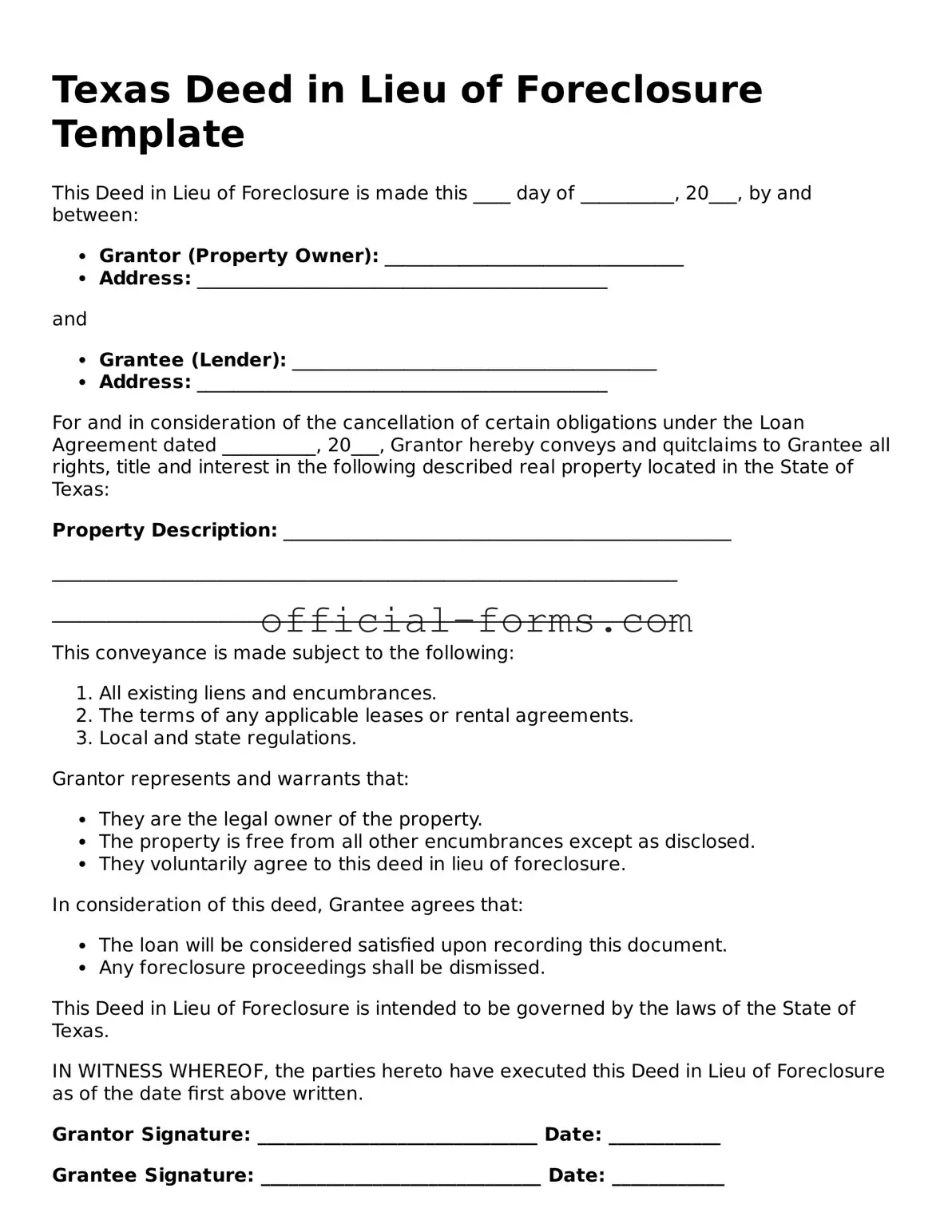Filling out a Deed in Lieu of Foreclosure form in Texas can be a daunting task, and many people make common mistakes that can complicate the process. One of the most frequent errors is failing to include all necessary parties. When transferring property, it's essential to ensure that all individuals or entities with an interest in the property are listed on the form. Omitting a co-owner or lienholder can lead to legal complications down the line.
Another common mistake is not providing accurate property descriptions. A vague or incorrect description can create confusion and may even invalidate the deed. It's crucial to include the legal description of the property, which can typically be found on the current deed or in public records. This description should be precise to avoid any disputes in the future.
Many people also overlook the importance of notary acknowledgment. In Texas, a Deed in Lieu of Foreclosure must be notarized to be legally binding. Failing to have the document notarized can render it ineffective, meaning that the transfer of property might not be recognized by the courts or other entities.
Additionally, some individuals neglect to read the terms of the deed thoroughly. Understanding the implications of signing a Deed in Lieu of Foreclosure is vital. This document not only transfers ownership but may also include clauses that affect future liability. It’s important to grasp these terms fully before proceeding.
Another mistake involves timing. People often rush to submit the form without ensuring that all conditions are met. For example, lenders may require specific documentation or a waiting period before accepting a Deed in Lieu of Foreclosure. Ignoring these requirements can lead to delays or rejection of the deed.
Furthermore, individuals may fail to communicate effectively with their lender. It’s advisable to keep an open line of communication throughout the process. Not informing the lender about the intention to pursue a Deed in Lieu of Foreclosure can create misunderstandings and may even lead to further legal action.
Finally, many people underestimate the importance of seeking legal advice. While it’s possible to fill out the form independently, consulting with a real estate attorney can provide valuable insights and help avoid pitfalls. Legal professionals can guide individuals through the process, ensuring that all requirements are met and that their rights are protected.
